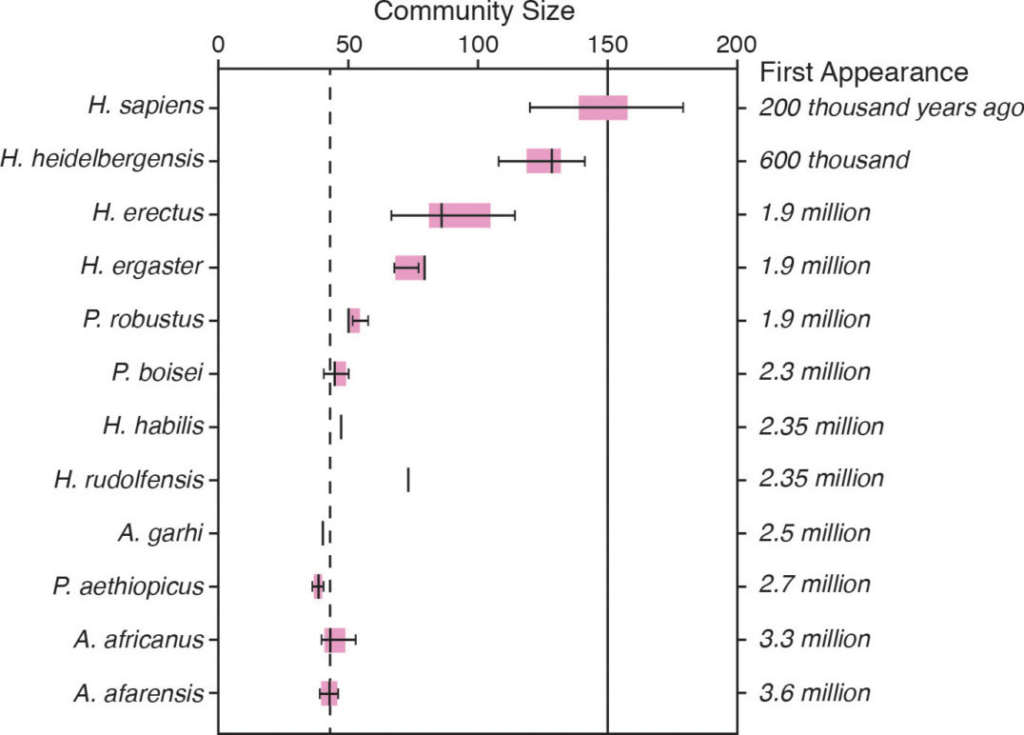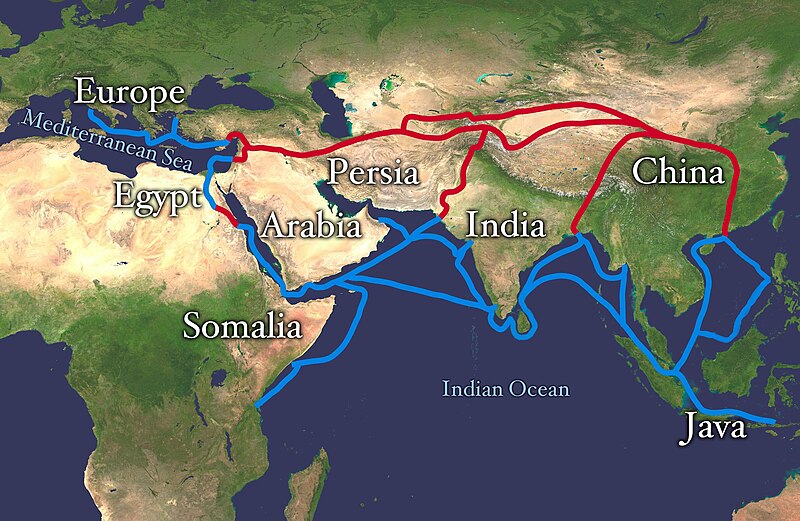Social Networking
Throughout our evolutionary history, our ancestors lived in ever larger groups. Due to the need for division of labor (foraging, toolmaking, child care, preparing food …), our ancestors depended on the group. For most of the approximately 250,000-year history of our species, people lived in small hunter-gatherer groups of up to about 150 people. According to some anthropologists, 150 is still the maximum group size in which people are able to know each other reasonably well and to be familiar with each other (Dunbar’s number).
But thanks to our social temperament, our ability for language and symbolic thinking, we can also build a common identity, friendly relationships and trust with complete strangers, work with them and exchange knowledge and resources with them.
Historians estimate that the first city with more than 1000 people appeared about 9000 years ago – only “recently”. Today there are about 20 megacities with a population of more than 20 million, and about 160 cities with a population of more than 1 million. Half of the world’s population now lives in cities, and according to some predictions, this is expected to increase to 70% by 2050.

Goal of the 11 Global Sustainable Development Goals is to make the cities and settlements in which people live inclusive, safe, resilient and sustainable.
What factors motivate people to move to urban areas?
How will people live together in the future?
What impact will urbanization have on the future evolution of our species? Will urbanization have more of a positive or negative impact on human well-being and the sustainable development of our species?
What can we do so that life in cities will have a positive impact on us and our environment?
more data and information about urbanization: https://ourworldindata.org/urbanization
Social networking
There are indications that our ancestors were increasingly connected with other groups about 300,000 years ago. They exchanged seemingly valuable resources among themselves – the beginning of bartering. Through our social skills and our ability for language and symbolic thinking, our species is able to build relationships with strangers that are not marked by competition but cooperation, with mutual benefit. The more complex tools of the Middle Stone Age were increasingly made from regional materials. For example, in some excavations in Kenya, tools where found whose material came from up to 90 km away. Some archaeologists suspect that this social networking was vital to survival at a time of severe environmental variability.
About 50,000 years ago, people probably already had boats that could cross oceans, and they bartered along shores. The domestication of animals facilitated the networking between groups of people: things could be transported over long distances with the help of pack animals such as camels. Technologies such as ships, railway, the automotive industry and the Internet accelerated this networking of the world.
- How will global networking influence the evolution of our species in the future?
- Will social networking have positive effects on relationships between humans or will there be challenges? Will we be able to keep up cooperative relationships on a global level and across cultural diversity?
- What impacts might the use of resources related to social networking – such as for trade, travel, and internet use – have on environmental sustainability?

Major routes of the silk road in the 2nd century BC. Image source
Exponential increase in global trade (value of exported goods).
Through more efficient and affordable technologies as well as a rise in living standards in many countries, international tourism increased more and more.
- more data and information about global connections:
- https://ourworldindata.org/trade-and-globalization
- https://ourworldindata.org/tourism

